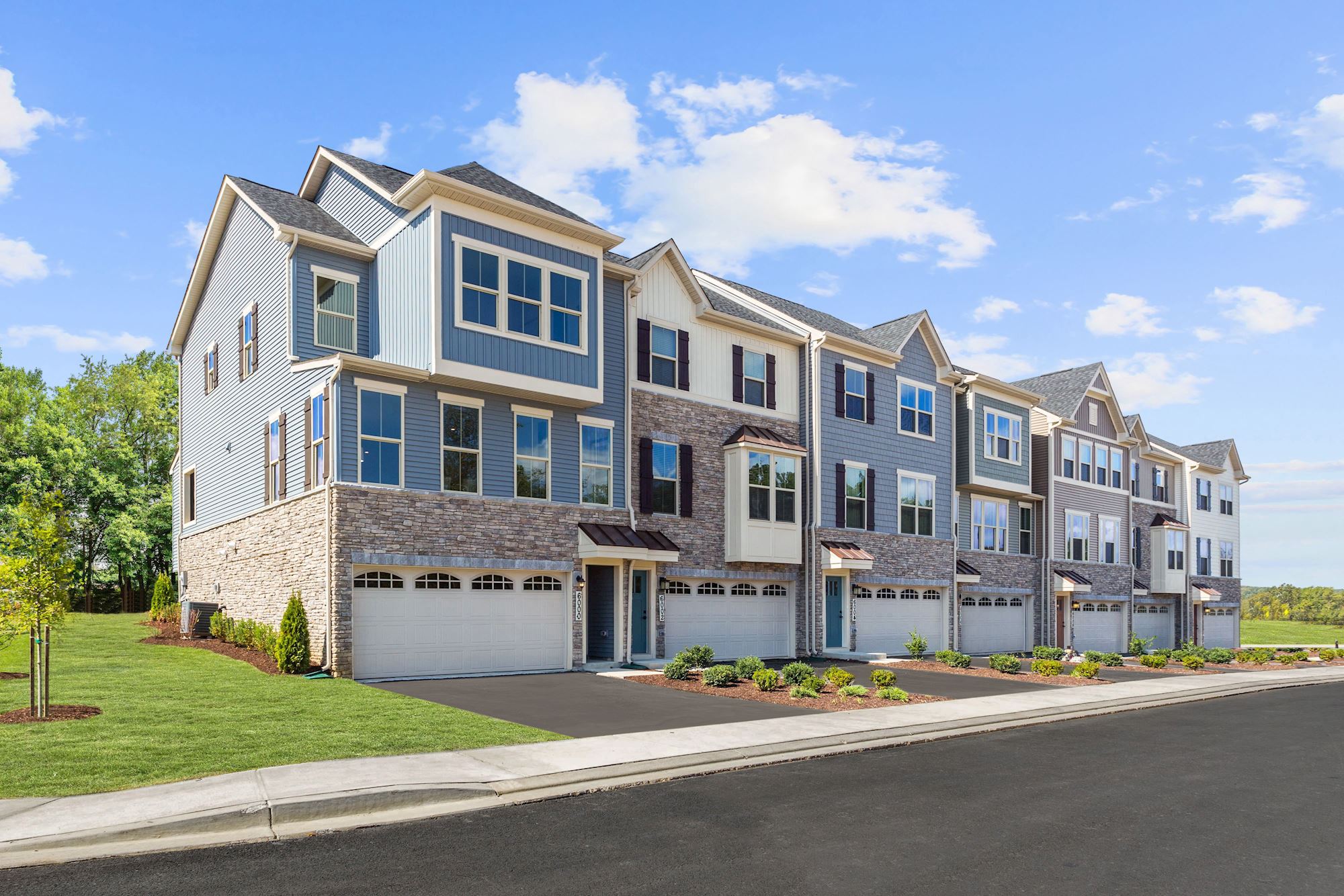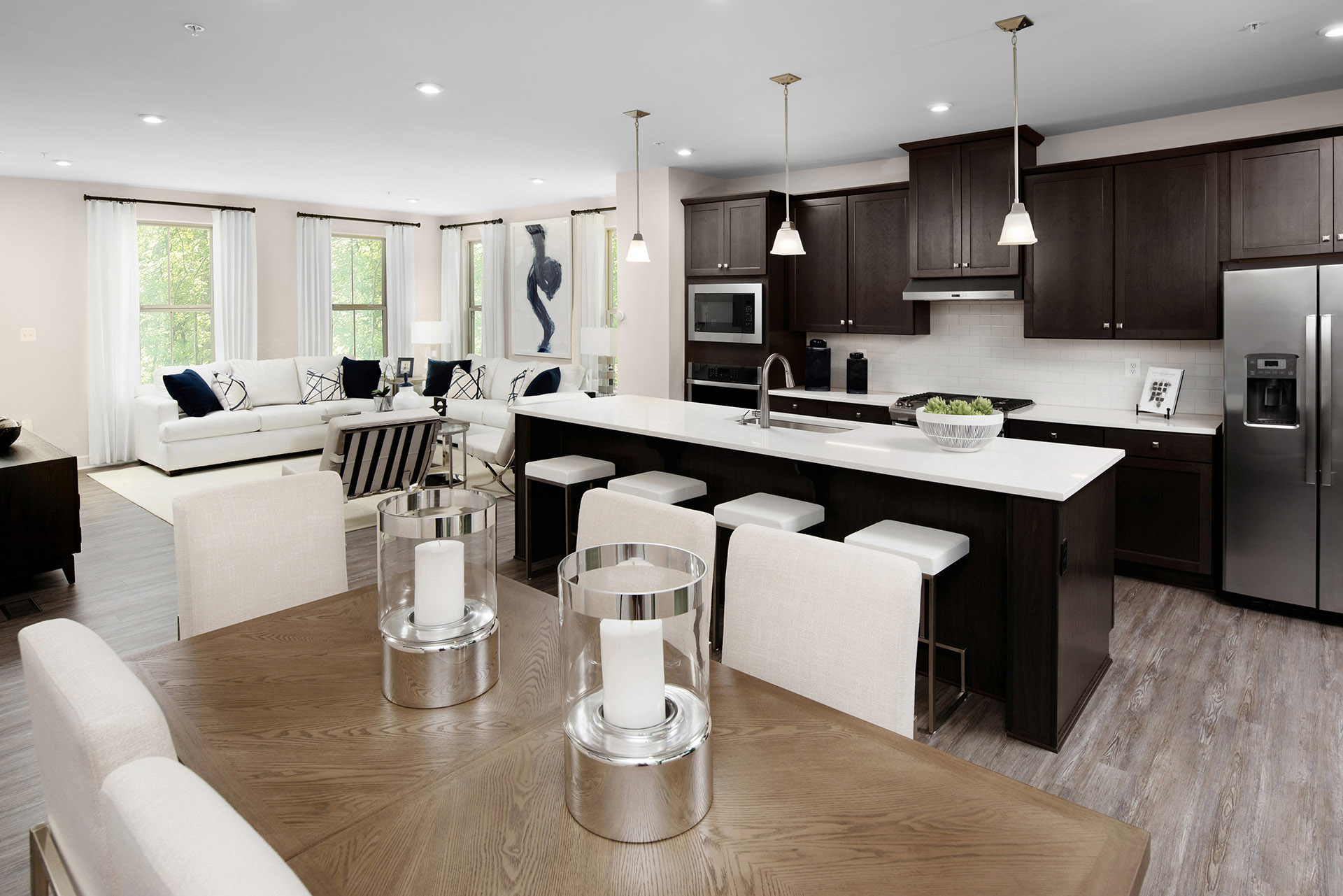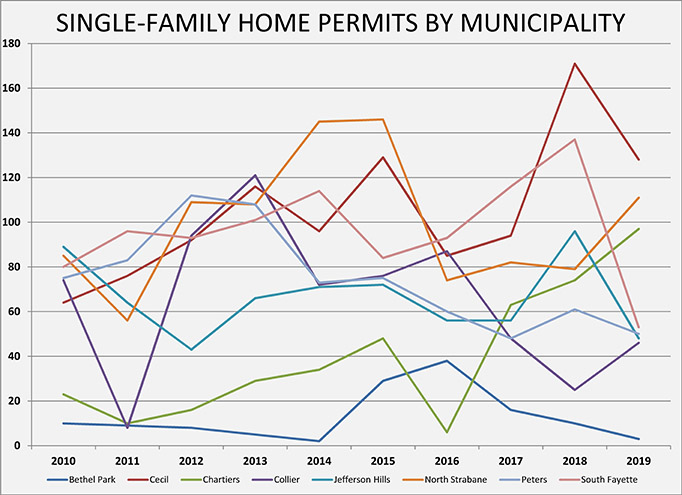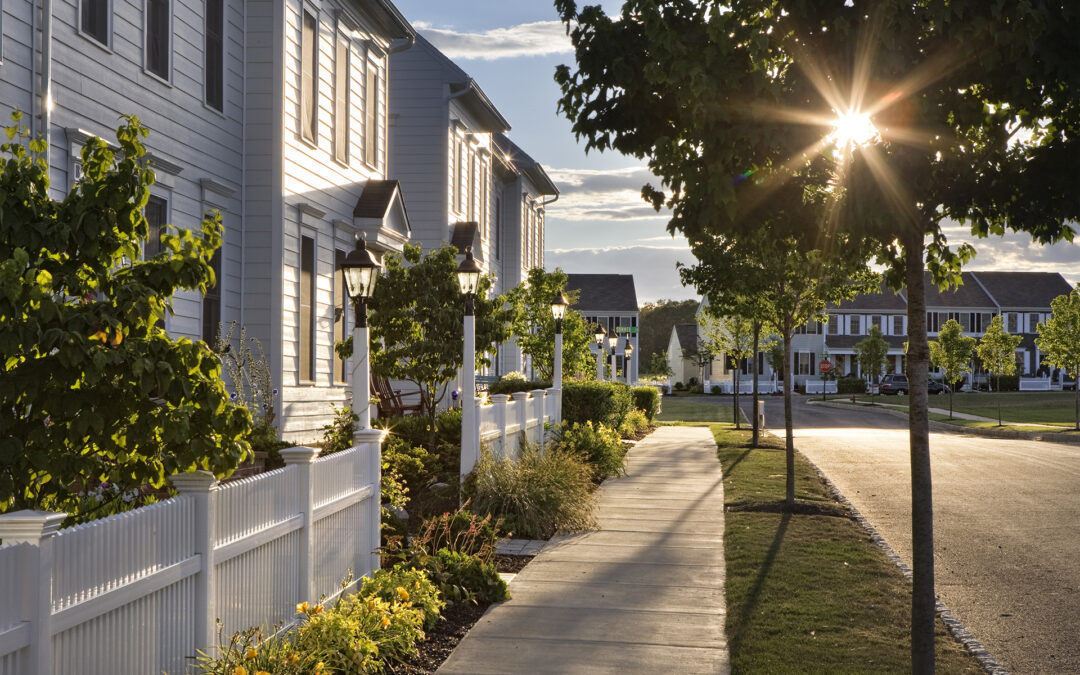The disruption caused by the coronavirus COVID-19 made for a rough spring for the housing market everywhere. But the uncertainty of life in 2020 has not disrupted the long-term trends of building, buying, and selling homes in the South Hills. For three generations, the communities south of the city have been attracting city dwellers and out-of-towners who are looking for a suburban lifestyle with the benefits of Pittsburgh’s bright lights.
As buyers have returned to the market in June and July, boosting home sales and new construction again, the South Hills has seen little disruption in its long-term trends. The more desirable communities in Allegheny County have little in the way of lots to build and the strength in demand in northern Washington County remains. It’s a fairly boring market, if you’re looking for big changes. That’s not a bad thing, says one builder.
“We like the South Hills nice and boring,” jokes Paul Scarmazzi, CEO of Scarmazzi Homes.
Scarmazzi, of course, doesn’t actually want a boring market. But, like most builders working in southern Pittsburgh communities, he enjoys the steady strong demand for homes. The South Hills has been home to many of the employees who were attracted to the region during the Marcellus shale play build-up. The slowdown in the gas industry created an outflow of workers, especially executives, but that has been little more than a blip on the radar.
“The oil and gas industry pulling out left a little bit of glut in the luxury end of the market. It’s not a huge number but that market is definitely different,” observes Tom Hosack, president and CEO of Berkshire Hathaway Home Services, The Preferred Realty, and current president of West Penn Multi-List. “The positive driver in almost all markets is the school district and in the South Hills you have so many good school districts that it’s attractive to people coming in from out of town.”
Perennial Top-10 school districts from Upper St. Clair and Mt. Lebanon have been joined by Peters Township and South Fayette Township among the top districts in Pennsylvania during the past few years. Those districts cover a large swath of territory straddling the Allegheny County-Washington County line, creating opportunities for families looking for classic architecture, older fixer-uppers, new homes in large new neighborhoods, empty-nester villas, or custom mansions. Whatever a buyer is looking for, the southern communities are likely to have it. The only problem for buyers is that there’s not enough of it, whether it’s an existing home or new construction.
The New Construction Market
One of the steadiest segments of the South Hills real estate market is new construction. According to the Pittsburgh Homebuilding Report, new construction activity in the southern communities has been generally located in a half-dozen municipalities strung along the Interstate 79 corridor for more than twenty years. In fact, three of those municipalities have been among the ten most active in Western PA every year.
In 2000, Peters Township, Cecil Township (home to Southpointe), North Strabane Township, and South Fayette Township were all in the top ten communities for new construction. The same was true in 2006, and 2013 (when Peters Township was the region’s busiest). During the past three years, a shortage of new lots has slowed construction in Peters Township, but a burst of new activity in Chartiers Township pushed it into the top ten in 2019.
Demand for new construction doesn’t necessarily follow the demand for housing overall. Unlike with the North Hills, for example, where the most construction has typically followed the highest-rated school districts, buyers in the South Hills are frequently looking to locate in the suburbs of Mt. Lebanon and Upper St. Clair, neither of which sees much new construction. Buyers who prefer new construction as a top priority need only look to the next community to the south or west to find an award-winning school district and lots of new homes. In those communities – South Fayette, Peters, and Cecil Townships – there are generally between 200 and 300 new homes to choose from each year. There is also a broad spectrum of home types, from townhomes to luxury custom homes, although not necessarily enough of each.
“The new construction we have is doing well in the South Hills. Howard Hanna represents three major sites in the South Hills for new construction and those are consistent,” says Darlene Hunter, vice president for new construction at Howard Hanna Real Estate Services.
Hunter notes that more of the new construction in the South Hills is tilted towards the production builder. She wonders that demand might pick up if there was more custom product in the market. But the custom builders are quick to note that it’s not demand that is lagging; it’s supply.
“What I see for sure is that there are not enough lots. It’s the same story we’ve been talking about for five or ten years,” says Jeff Costa, founder of Costa Homebuilders. If somebody calls me and tells me they want to build in an older community, like Bethel Park, I’m not sure I can find a place to build. The limited supply of lots is our biggest challenge.”
Tight lot supply is a reality throughout the South Hills, even in the communities that have seen significant growth of new construction. There are a number of factors keeping lot supply low. Many banks were burned by over-leveraged developers during the Great Recession and have shied away from residential development lending. Moreover, regulations that responded to the mortgage crisis made it more difficult to obtain financing for new subdivisions, especially for the traditional multi-builder custom neighborhoods. More of the land available for development today is hilly and expensive to prepare. And the proximity of the South Hills to the gas-rich Marcellus shale formation created competition for land that drove prices higher than could be justified for residential development. In several municipalities, there simply isn’t land on the market.
“There is not a lot of land yet to be developed in Peters but the people who own the available land don’t have it on the market. The owners are holding on to it,” says Ed Zuk, planning director for Peters Township. “I think that slowed the number of residential plans being developed.”
Zuk referenced some of the well-known commercial farms, like Simmons Farm, Trax Farm and Bebout Farm, none of which he expected to ever be for sale.
“If there is land available, somebody is going to develop it. There is property out there sitting that no one has developed. It’s just the lack of large tracts of property that are not for sale,” agrees Gary Hartz, building inspector/code officer at South Fayette Township. “If you talk to any developer, they are always looking at South Fayette. It’s not for lack of demand; it’s just the lack of available land.”
“We have been seeing homes around the country club being torn down and new homes being built because of the view of the country club. Most of the vacant land in our township is parks,” laughs Adam Benigni, director of community development for Upper St. Clair Township. “For single-family homes there are 30 lots, give or take a few.”

Image by Ryan Homes
The data backs up the observations of the municipal officials. In Peters Township, only three new plans, totaling 119 lots were approved in 2019. That was a 37 percent decline compared to 2018. Roughly 360 lots are available throughout the township. In busy Chartiers Township, there are 180 lots for construction. South Fayette Township and Cecil Township each have between 300 and 400 approved lots. With a preponderance of the new construction coming from high-volume builders, those lots represent little more than two years supply. Darlene Hunter thinks adding more custom homes to the mix would boost demand and extend the supply.
“I do think that would help. People love the custom look. There is something different about those communities when you go into them,” she says. “I think there could be more patio home communities. Eddy Homes has done pretty well with their detached patio home model.”
Scarmazzi Homes has carved out a growing share of the new construction market by focusing on the patio home for the empty-nester. The builder has climbed steadily, trending towards building 100 homes per year. Paul Scarmazzi observes that the production-oriented builders have been driving the overall market, while his segment is being driven by the growth of empty-nest buyers.
“We have just watched with amazement at how Ryan and Maronda are doing with the continued demand in Cecil and North Strabane,” he says. “And Chartiers is a great story. When we started there 15 years ago people thought we were crazy, but it’s a really strong market and I continue to see it grow and expand.”
Demographics are a major factor driving construction trends throughout the Pittsburgh region. The high share of aging residents and the “hole” in the demographic picture where there should be 45-to-55-year old’s have impacted the type and volume of housing being built. This has been especially true since the turn of the century, as older people have remained in their family homes much longer than their predecessors. Baby Boomers, who have resisted downsizing for about a decade longer than normal, have kept the inventory of existing houses for sale low. That same trend has dampened construction of new homes designed for empty-nesters. The traditional domino effect of young families buying starter homes and moving up after five years or so has been delayed.
The empty-nester product has still been one of the hottest-selling new home products in the market. In the Allegheny County communities of the South Hills the shortage of buildable land pushed the development of empty-nester communities further south into Washington County. The demographics of Washington County aren’t especially different from the rest of the region, but the larger supply of land available for development provided the opportunity to build new over-55 communities. People over 65 make up 20 percent share of the residents in the market. The proximity of municipalities like Cecil Township or Chartiers Township to the mainline suburbs means that lifelong South Hills residents need only to move 10 or 15 minutes further south to get into a new home geared for their lifestyle.
The Existing Home Market – Selling During a Pandemic
Perhaps the biggest surprise of the housing market in 2020 has been the health of Pittsburgh real estate. Pittsburgh’s real estate companies were optimistic coming into 2020 because of a booming economy and an inventory of homes for sale that was at last creeping higher. In the southern communities in particular, there were a few factors that were increasing demand even higher.
One long-term factor is the improving infrastructure. The “old” South Hills consisted of densely built suburbs clustered along Route 51 and Route 19. As the South Hills grew to the county borders and beyond, there were inherent inconveniences associated with the reliance on these two somewhat obsolete U.S. highways. Much of the new growth since 2000 has been closer to the I-79 corridor, and the state and counties have worked to improve the connections from the interior suburbs to the interstates. In 2019, PennDOT let the final contracts for the billion-dollar Southern Beltway connector to the airport. The decades-long project will connect to I-79 near Southpointe, giving residents of the southern communities direct access to the Pittsburgh International Airport (and beyond) without dealing with Parkway West traffic.
“One other thing I would say is that the road system in the South Hills is pretty challenging. When the airport connector opens up, that may be the changing factor,” says Darlene Hunter.

Image by Heartland Homes
Another factor driving higher demand in the South Hills is the growing awareness of the excellence of Peters Township School District and South Fayette School District. Both districts have been ranked in the top five for academic performance by the Pittsburgh Business Times analysis in the past three years, with South Fayette topping the list in 2017. In 2020, South Fayette High School ranked 18th out of 688 high schools in Pennsylvania. The elevated rankings for these two districts help boost demand, especially since there are many more affordable family neighborhoods in Peters Township and South Fayette Township than in the more established Mt. Lebanon or Upper St. Clair. As always, better schools are a draw for home buyers, and something of a self-fulfilling prophecy. Buyers in better school districts tend to expect more of the schools, which drives home appreciation and, in turn, attracts more affluent, better-educated buyers.
“When you have more affluent parents, with better educational backgrounds, they tend to make their kids go to school. They make them study and they get better grades,” notes Hosack. “If you look at any community in Pittsburgh that has a good school district, they have a higher resale price on their homes.”
Those kinds of districts also tend to have better finances, which allows for better facilities. That’s certainly the case in Peters and South Fayette, both of which have invested heavily in excellent facilities. That will translate into better demand for homes.
“Peters Township does have a brand-new high school going up on East McMurray Road, so that will help drive more development interest in that community,” says Hunter.
“We’re hearing a lot of customers interested in Peters Township. We probably went a year without hearing the name Peters, but in the last four months we’ve been getting inquiries about Peters Township than any place in the South Hills,” agrees Jeff Costa.
The third favorable influence on the market is the aforementioned demographic shift, which was pushing demand for new empty-nest product and creating inventory for the move-up buyers that drive the residential real estate market. All three of these demand drivers were chilled when the statewide shelter at home orders went into effect in March and April. The evidence of May and June is that the shutdown merely delayed the inevitable trend.
“One thing with the housing market here is that there are a ton of houses pending. It was difficult for people to buy a house [during the spring] and now everyone feels they have to hurry up. I’ve heard of some houses in Upper St. Clair recently that were purchased sight unseen. The buyers made the decision from looking online,” says Benigni.
“Pre-Covid, we were down 12 percent because of a lack of available homes on the market year over year. We came into the shutdown with a low inventory, but people were running out of the gates coming out of it,” says Scarmazzi. “Customers were calling us asking to move our construction up because they sold their house in two days. My experience with the resale market is through my customers, and my customers are selling their houses at or above asking price and very quickly.”
Scarmazzi started his career in commercial real estate finance and likes to keep an eye on the evolving macroeconomic trends. He says a recent housing market webinar analyzed why builders across the U.S. were mostly exceeding their expectations for 2020 in the face of a severe economic downturn. It turns out to be something of a numbers game and the inevitable drumbeat of demographics. Because of the severe under-building in the 2010s, the pool of buyers in 2020 well outstrips the supply. Baby Boomers are finally leaving the family home and Millennials are increasing their home ownership rate. The result, says Scarmazzi, is that only about three percent of the pool of interested buyers need to choose to build to have an average year.
Another factor driving higher demand in the South Hills is the growing awareness of the excellence of Peters Township School District and South Fayette School District. Both districts have been ranked in the top five for academic performance by the Pittsburgh Business Times analysis in the past three years, with South Fayette topping the list in 2017. In 2020, South Fayette High School ranked 18th out of 688 high schools in Pennsylvania. The elevated rankings for these two districts help boost demand, especially since there are many more affordable family neighborhoods in Peters Township and South Fayette Township than in the more established Mt. Lebanon or Upper St. Clair. As always, better schools are a draw for home buyers, and something of a self-fulfilling prophecy. Buyers in better school districts tend to expect more of the schools, which drives home appreciation and, in turn, attracts more affluent, better-educated buyers.
“When you have more affluent parents, with better educational backgrounds, they tend to make their kids go to school. They make them study and they get better grades,” notes Hosack. “If you look at any community in Pittsburgh that has a good school district, they have a higher resale price on their homes.”
Those kinds of districts also tend to have better finances, which allows for better facilities. That’s certainly the case in Peters and South Fayette, both of which have invested heavily in excellent facilities. That will translate into better demand for homes.
“Peters Township does have a brand-new high school going up on East McMurray Road, so that will help drive more development interest in that community,” says Hunter.
“We’re hearing a lot of customers interested in Peters Township. We probably went a year without hearing the name Peters, but in the last four months we’ve been getting inquiries about Peters Township than any place in the South Hills,” agrees Jeff Costa.
The third favorable influence on the market is the aforementioned demographic shift, which was pushing demand for new empty-nest product and creating inventory for the move-up buyers that drive the residential real estate market. All three of these demand drivers were chilled when the statewide shelter at home orders went into effect in March and April. The evidence of May and June is that the shutdown merely delayed the inevitable trend.
“One thing with the housing market here is that there are a ton of houses pending. It was difficult for people to buy a house [during the spring] and now everyone feels they have to hurry up. I’ve heard of some houses in Upper St. Clair recently that were purchased sight unseen. The buyers made the decision from looking online,” says Benigni.
“Pre-Covid, we were down 12 percent because of a lack of available homes on the market year over year. We came into the shutdown with a low inventory, but people were running out of the gates coming out of it,” says Scarmazzi. “Customers were calling us asking to move our construction up because they sold their house in two days. My experience with the resale market is through my customers, and my customers are selling their houses at or above asking price and very quickly.”
Scarmazzi started his career in commercial real estate finance and likes to keep an eye on the evolving macroeconomic trends. He says a recent housing market webinar analyzed why builders across the U.S. were mostly exceeding their expectations for 2020 in the face of a severe economic downturn. It turns out to be something of a numbers game and the inevitable drumbeat of demographics. Because of the severe under-building in the 2010s, the pool of buyers in 2020 well outstrips the supply. Baby Boomers are finally leaving the family home and Millennials are increasing their home ownership rate. The result, says Scarmazzi, is that only about three percent of the pool of interested buyers need to choose to build to have an average year.

Permits for new single-family detached homes and townhomes declined for most South Hills communities as lots became scarcer over the past few years.
Source: Pittsburgh Homebuilding Report.
Scarmazzi started his career in commercial real estate finance and likes to keep an eye on the evolving macroeconomic trends. He says a recent housing market webinar analyzed why builders across the U.S. were mostly exceeding their expectations for 2020 in the face of a severe economic downturn. It turns out to be something of a numbers game and the inevitable drumbeat of demographics. Because of the severe under-building in the 2010s, the pool of buyers in 2020 well outstrips the supply. Baby Boomers are finally leaving the family home and Millennials are increasing their home ownership rate. The result, says Scarmazzi, is that only about three percent of the pool of interested buyers need to choose to build to have an average year.
According to Hosack, there have been many more buyers than the three percent needed to maintain pace. He says there is anecdotal evidence that there has been a tipping point reached in the housing market in Pittsburgh. Virtually every home on the market is getting multiple offers. Stories abound, Hosack says, of buyers paying $50,000 above asking price at the upper end of the market. He’s discerned a shift in mentality that he hopes is not temporary.
“The thing we’re finding in this post-pandemic period, at least in our market, is that buyers’ attitudes have change,” he says. “People were a little cautious, a little conservative coming into this year. They didn’t want to overpay. That attitude seems to have been replaced with, I want it now.’’
Hosack says the change in attitude is noticeable in all parts of the region, of course, but the impact on the South Hills compounds an already strong market. Sales prices in many of the southern communities are among the highest in Western PA. Year-over-year sales prices have jumped higher since the metro Pittsburgh market went to the “green” phase in early June. That effect will be stronger in places like Mt. Lebanon, Upper St. Clair, South Fayette Township, and north Washington County, which had strong demand already. Higher prices for existing homes have an accelerating effect on new construction too.
“New construction benefits from the higher appreciation. I can’t tell you the exact figure, but it’s probably around 12 percent appreciation in price so far this year,” Hosack predicts. “That’s going to help new construction because it helps buyers get to the affordability level of new homes.”
Hosack isn’t worried that accelerated home appreciation is going to price buyers out of the market in the South Hills.
“I’m big on analogies,” he says. “If my wife and I want to go out to dinner and we go to a good restaurant with a two-hour wait. Let’s say I don’t want to wait so I go to the next restaurant and there’s a two-hour wait, but I don’t want to wait. Eventually, I’ll find a restaurant with no wait and you know what I’ve found? A terrible meal. If you want a good house in a good location, you are going to have to pay for it. The good news is you’re getting it at 2.5 percent interest. That means you’re getting a great home that is as affordable as it’s ever been.”
That’s an important distinction for shoppers interested in the South Hills. There is a combination of architecture, housing types, neighborhoods, school districts, and proximity to the region’s lifestyle amenities that creates a wider variety of housing options in the South Hills than in almost any other corner of Western PA. The low cost of borrowing in 2020 means that buyers can reach for that prestigious address, top-shelf school district, or a little more space than was available in the past. That’s great news for Pittsburgh’s southern communities. NH


